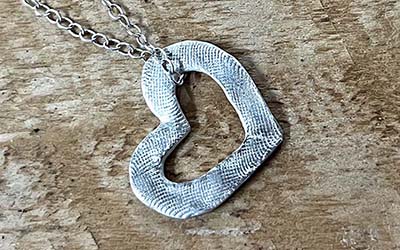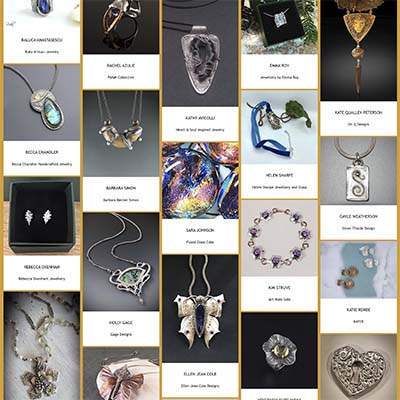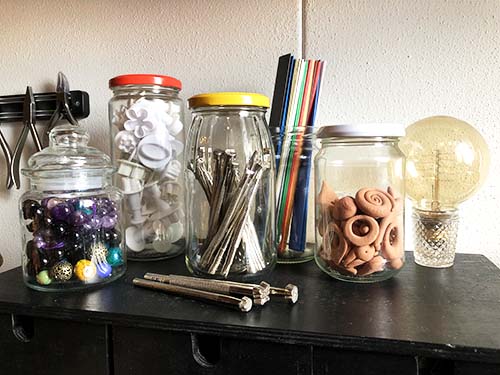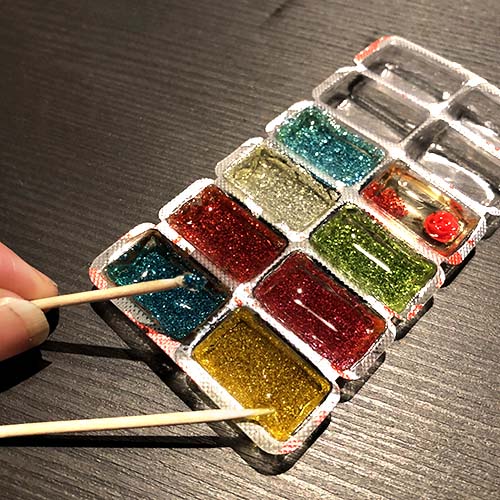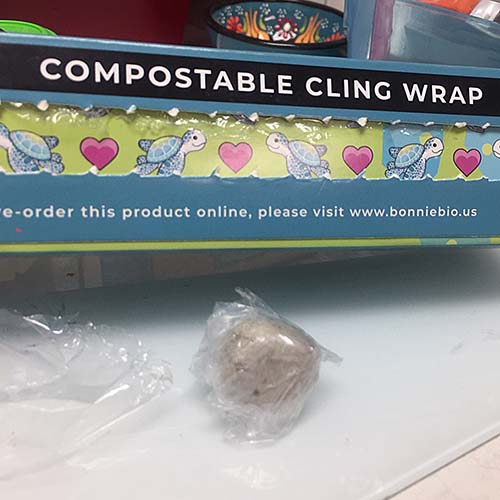Ten Top Tips for a Green Workspace
Metal clay is a great product! It’s made from recycled metal and by making beautiful things with it, you are already doing your bit for a better environment. We all want to preserve our planet and stop plastic from filling up our oceans and depleting our precious resources like there will be no tomorrow. But how? Here are our ten top tips that will help you make your workspace greener.
If you’re already doing a lot of these things, that’s great! This article is just about being aware of how your work processes impact the world. You might think that what you are doing is just a drop in the ocean, however a small drop of water can ripple out to make big circles.

Save electricity
Turn off lights that you are not using and switch to led lightbulbs which use less energy and last longer. Unplug electric appliances when you are not using them. They often still use a small amount of electricity if they are plugged in. Remove re-useable batteries from their sockets after charging them.

Dispose of chemicals safely
Different cities and countries have different regulations in the way gasses and chemicals are handled or disposed of. Always read the labels and take care when handling chemicals. When in doubt check with the authorities in your area to know how and where to dispose of hazardous materials.

Give unused tools a second life
There are many groups on Facebook where you can offer your tools to other artists. Make someone happy with a bargain, create space on your bench, and reduce waste at the same time. Think about visiting yard sales or flea markets to find second-hand tools you can re-purpose.

Recycle waste the right way
Sadly, it is not as easy as plastic bad, paper good! Sometimes you have to choose your battles. Plastic can often be cleaned and reused or reycled, however dirty paper like a used paper plate can’t. Most glass jars and bottles can be recycled, but some types of glass, like heat resistant ovenware and window glass isn’t recyclable. So, replacing plastic with paper or glass doesn’t necessarily mean it’s a better choice. Recycling is all about melting temperatures and cleaning processes. You’ll have to research what is acceptable in your area, since the recycling process varies from country to country. Make it easy to go green by using different bins for different types of waste. For example, an old plastic bag for plastic waste, a cardboard box for paper and a bin with a lid for biodegradable waste.

Invest in durable options
When electric tools wear out or break, as they sometimes do over time, investigate more durable options. Look for brands that are more reliable and will last longer. It may be cheaper in the long term to invest in well-made tools, instead of buying a less expensive option that will need replacing more often.

Bring your own drink container
If you’re a teacher and supply lunch for a class, ask students to bring their own cups, glasses and cutlery. When you’re taking a class, bring your own. Nobody likes washing up, but in the end, it’s a small effort, saves a lot of money, and most importantly reduces waste. If you really feel you can’t go without disposables then choose a biodegradable version, like edible plates made out of a form of wheat or bamboo forks and spoons. Even paper cups have a thin coat of plastic. It’s worth the trouble to search for alternative solutions.

Think outside the box to recycle everything!
Save the smooth backing sheet on the back of sticky labels. It makes great templates, or liners for ring mandrels. Take apart used pens – shafts can make great tool handles, springs can be used for texturing, and the metal cylinder can be used as a cutter, or as a ‘place holder’ for bails instead of a cocktail straw. Thick plastic blister packs that are used to package many small items make great palettes for paint or resin, can be cut and used for templates. Trimmed into small squares, they also make great, portable work surfaces. Empty jars can be used for storage or made into a clay hydrator.

Buy in bulk
Keeping a stock of consumables like sandpaper isn’t just about economizing. Buying products in bulk, that you use often and have a long shelf life can help save the environment by reducing the need for shipping materials like plastic tape and bubble wrap and the gas it takes for you to get to the store or for the truck traveling from the manufacturers’ warehouse to the distributor.

Buy biodegradable!
Two of the more popular supplies used with metal clay can easily be replaced with biodegradable versions. Many brands of baby wipes are made of polypropylene – which is basically plastic – and the clear plastic wrap used to keep clay fresh is equally destructive to the earth. Use your damp finger to smooth fresh clay surfaces or recycle old eye shadow applicators (don’t buy them new, they’re plastic!). Make a re-useable clay hydrator with a recycled glass jar and a damp piece of natural sea sponge to keep clay fresh. Or spend a bit more and search for the internet for compostable alternatives.

Use your customer power
If we really want to reduce waste, we need our products to use as little packaging as possible. Write manufacturers and suppliers and ask them to reduce or use environmentally friendly packaging. We are their customers and we have to tell them it is important to us!
Plastic is just too convenient to ever go away permanently, but if we choose what we really need to buy, and what can be substituted with a better alternative, we’ll help the earth heal and make the lives of future generations healthier and happier.
Share your tips on saving the environment on the AMCAW Facebook group. Shout them out! Be proud of the effort you are making and inspire others. Let your drop of water ripple out and cover the earth.
Join our AMCAW Members Facebook group


